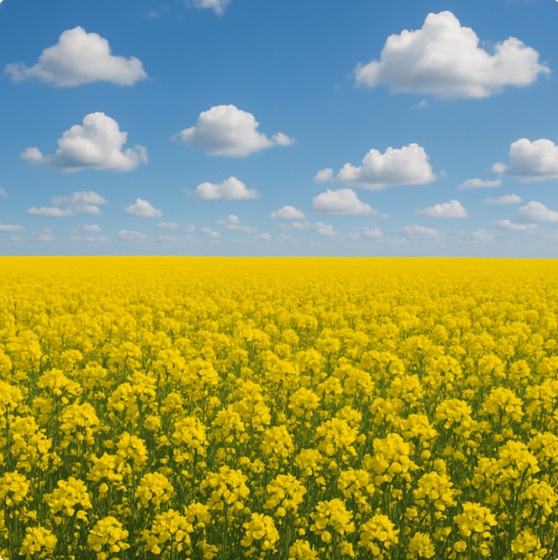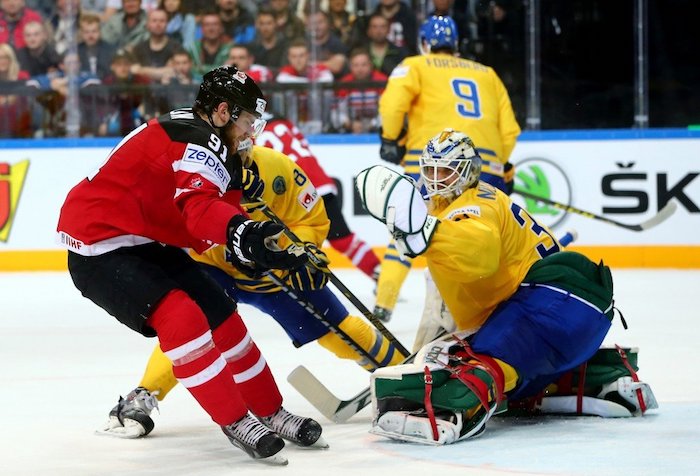Agriculture
City Council urged to get back to the table to vote on future of Westerner Park

Letter submitted by Lyn Radford (Chair of the 2019 Canada Winter Games)
Lack of Council Leadership or Election Posturing?
In this unprecedented time of the pandemic, of polarized political views I have tried to stay out of commenting on decisions our political leaders have to make. We all know there is not usually a clear-cut answer. But this delay situation by City Council regarding the Westerner clearly baffles me.
First, I want to send out a thank you to both the Westerner and City Administration for their hard work and excellent reports and options for this very unfortunate situation. Second, I want to thank the Westerner Board for not running from a situation but rather staying to try to sort out a mess. As a volunteer myself, I know this has not been an easy situation for you and your families. I also want to acknowledge Councillors Wyntjes and Dawe for wanting to move this forward, whatever their decision would have been.
The City’s Vision Statement and Strategic Goals clearly lays out a pathway to help guide Council to make a positive, community benefiting decisions. “Innovative Thinking, Inspired Results, Vibrant Community” are their key words.
Strategic Goal #4 “A chosen destination: We are a four-season destination where visitors and residents enjoy our parks, trails and distinctive amenities, all within our “city in a park”. Centrally located in the province, we attract events that generate investment and enhance our community identity.
My question is how by delaying a decision does City Council justify following their Vision Statement and Strategic Goals.
I add these queries and statements:
- You have had more than year to gather information, make enquiries, have closed council information sessions, spoke to community members, and should have delved into this. You received the report far in advance of the special session and should have come ready for a decision without delay. Why did this not happen?
- The City has been locked and instep with the Westerner in the last year. The Westerner has fulfilled all requests and have been measured through two (very expensive) audits by Deloitte.
- There is over $3.5 million generously donated by a private family, held in trust for the Westerner Foundation, that could be doubled with a potential matching grant that will be dispersed upon a sustainable decision for Westerner Park, if a deal has been reached by May 15th. And our community will most likely lose this because of this delay. Sad.
- If CIBC closes on the loan for default (community this is very, very real), there will be hundreds of thousands of dollars spent putting this into receivership, of which our community will have no gain or say. And further, we will not have an event center capable of hosting the economic driver our community so sorely needs right now, as we know what the vacant downtown and business parks are looking like today.
- How much staff time has been spent already? Spend more money delaying a decision, no matter what the cost?
- Twice, not just once, in your session, councillors questioned the capabilities of the Westerners CEO. Did you not have time in the closed sessions to request a character assessment? Do councillors feel this was the right, very public forum for this? Rather than being able to say you did your due diligence in a professional and respective manner?
- Through the whole poor decision making by the Westerner Board that brought this terrible situation forward, there were three members of today’s council that actively sat on the Westerner Board. Maybe some ownership needs to happen here and a review of the responsibility process for Councillors to be revisited, giving a level of responsibility to council. If you want to sit at the table, then accept all the responsibility as every other board member has had to do.
- Further, the initial loan that started this process way back in 2017 and subsequent refinancing all had to be signed through a tri-party agreement by the City of Red Deer, fully knowing that this result could happen. Why is there any hesitation here?
- The window of borrowing from the province is very small now, missing this will create more costs.
- The Westerner annually, has been contributing a $150 million/year economic impact to our community. They were one of the largest employer’s, well over 600 employees each year and then add all the employees of the supporting vendors, we can comfortably say that in a year well over a thousand of our community members that pay property taxes are impacted by the Westerner directly.
- The Westerner has been a volunteer ran organization for 130 years. These volunteers and eventually along with paid staff have contributed so much to our “vibrant community”, building an asset value of over $57 Million dollars. This is a big bump but not a mountain, lets deal with it.
- No matter who you are or what your interests are, the Westerner has been providing experiences for us for 130 years – concerts, sporting events, rodeo events, fairs, shopping opportunities, cultural experiences, first jobs, first dates, health fairs, Agri trade, a place to first learn to drive, the day you wed, celebrating the season, ringing the New Year……all for our community
In conclusion, what we need right now is Council members to host a special meeting immediately and make a decision one way or another. I sincerely hope the decision will be to support, empower, trust and not control or try to compete with the community run Westerner Board, volunteers, and staff to rebuild a “distinct community amenity”. It can become a strong thriving contributing member of our broken community once again. We are in need of some strong leadership.
Respectfully submitted,
Lyn Radford
Agriculture
Federal cabinet calls for Canadian bank used primarily by white farmers to be more diverse

From LifeSiteNews
A finance department review suggested women, youth, Indigenous, LGBTQ, Black and racialized entrepreneurs are underserved by Farm Credit Canada.
The Cabinet of Prime Minister Mark Carney said in a note that a Canadian Crown bank mostly used by farmers is too “white” and not diverse enough in its lending to “traditionally underrepresented groups” such as LGBT minorities.
Farm Credit Canada Regina, in Saskatchewan, is used by thousands of farmers, yet federal cabinet overseers claim its loan portfolio needs greater diversity.
The finance department note, which aims to make amendments to the Farm Credit Canada Act, claims that agriculture is “predominantly older white men.”
Proposed changes to the Act mean the government will mandate “regular legislative reviews to ensure alignment with the needs of the agriculture and agri-food sector.”
“Farm operators are predominantly older white men and farm families tend to have higher average incomes compared to all Canadians,” the note reads.
“Traditionally underrepresented groups such as women, youth, Indigenous, LGBTQ, and Black and racialized entrepreneurs may particularly benefit from regular legislative reviews to better enable Farm Credit Canada to align its activities with their specific needs.”
The text includes no legal amendment, and the finance department did not say why it was brought forward or who asked for the changes.
Canadian census data shows that there are only 590,710 farmers and their families, a number that keeps going down. The average farmer is a 55-year-old male and predominantly Christian, either Catholic or from the United Church.
Data shows that 6.9 percent of farmers are immigrants, with about 3.7 percent being “from racialized groups.”
National census data from 2021 indicates that about four percent of Canadians say they are LGBT; however, those who are farmers is not stated.
Historically, most farmers in Canada are multi-generational descendants of Christian/Catholic Europeans who came to Canada in the mid to late 1800s, mainly from the United Kingdom, Ireland, Ukraine, Russia, Italy, Poland, the Netherlands, Germany, and France.
Agriculture
Farmers Take The Hit While Biofuel Companies Cash In

From the Frontier Centre for Public Policy
Canada’s emissions policy rewards biofuels but punishes the people who grow our food
In the global rush to decarbonize, agriculture faces a contradictory narrative: livestock emissions are condemned as climate threats, while the same crops turned into biofuels are praised as green solutions argues senior fellow Dr. Joseph Fournier. This double standard ignores the natural carbon cycle and the fossil-fuel foundations of modern farming, penalizing food producers while rewarding biofuel makers through skewed carbon accounting and misguided policy incentives.
In the rush to decarbonize our world, agriculture finds itself caught in a bizarre contradiction.
Policymakers and environmental advocates decry methane and carbon dioxide emissions from livestock digestion, respiration and manure decay, labelling them urgent climate threats. Yet they celebrate the same corn and canola crops when diverted to ethanol and biodiesel as heroic offsets against fossil fuels.
Biofuels are good, but food is bad.
This double standard isn’t just inconsistent—it backfires. It ignores the full life cycle of the agricultural sector’s methane and carbon dioxide emissions and the historical reality that modern farming’s productivity owes its existence to hydrocarbons. It’s time to confront these hypocrisies head-on, or we risk chasing illusory credits while penalizing the very system that feeds us.
Let’s take Canada as an example.
It’s estimated that our agriculture sector emits 69 megatonnes (Mt) of carbon dioxide equivalent (CO2e) annually, or 10 per cent of national totals. Around 35 Mt comes from livestock digestion and respiration, including methane produced during digestion and carbon dioxide released through breathing. Manure composting adds another 12 Mt through methane and nitrous oxide.
Even crop residue decomposition is counted in emissions estimates.
Animal digestion and respiration, including burping and flatulence, and the composting of their waste are treated as industrial-scale pollutants.
These aren’t fossil emissions—they’re part of the natural carbon cycle, where last year’s stover or straw returns to the atmosphere after feeding soil life. Yet under United Nations Intergovernmental Panel on Climate Change (IPCC) guidelines adopted by Canada, they’re lumped into “agricultural sources,” making farmers look like climate offenders for doing their job.
Ironically, only 21 per cent—about 14 Mt—of the sector’s emissions come from actual fossil fuel use on the farm.
This inconsistency becomes even more apparent in the case of biofuels.
Feed the corn to cows, and its digestive gases count as a planetary liability. Turn it into ethanol, and suddenly it’s an offset.
Canada’s Clean Fuel Regulations (CFR) mandate a 15 per cent CO2e intensity drop by 2030 using biofuels. In this program, biofuel producers earn offset credits per litre, which become a major part of their revenue, alongside fuel sales.
Critics argue the CFR is essentially a second carbon tax, expected to add up to 17 cents per litre at the pump by 2030, with no consumer rebate this time.
But here’s the rub: crop residue emits carbon dioxide, methane and nitrous oxide whether the grain goes to fuel or food.
Diverting crops to biofuels doesn’t erase these emissions: it just shifts the accounting, rewarding biofuel producers with credits while farmers and ranchers take the emissions hit.
These aren’t theoretical concerns: they’re baked into policy.
If ethanol and biodiesel truly offset emissions, why penalize the same crops when used to feed livestock?
And why penalize farmers for crop residue decomposition while ignoring the emissions from rotting leaves, trees and grass in nature?
This contradiction stems from flawed assumptions and bad math.
Fossil fuels are often blamed, while the agricultural sector’s natural carbon loop is treated like a threat. Policy seems more interested in pinning blame than in understanding how food systems actually work.
This disconnect isn’t new—it’s embedded in the history of agriculture.
Since the Industrial Revolution, mechanization and hydrocarbons have driven abundance. The seed drill and reaper slashed labour needs. Tractors replaced horses, boosting output and reducing the workforce.
Yields exploded with synthetic fertilizers produced from methane and other hydrocarbons.
For every farm worker replaced, a barrel of oil stepped in.
A single modern tractor holds the energy equivalent of 50 to 100 barrels of oil, powering ploughing, planting and harvesting that once relied on sweat and oxen.
We’ve traded human labour for hydrocarbons, feeding billions in the process.
Biofuel offsets claim to reduce this dependence. But by subsidizing crop diversion, they deepen it; more corn for ethanol means more diesel for tractors.
It’s a policy trap: vilify farmers to fund green incentives, all while ignoring the fact that oil props up the table we eat from.
Policymakers must scrap the double standards, adopt full-cycle biogenic accounting, and invest in truly regenerative technologies or lift the emissions burden off farmers entirely.
Dr. Joseph Fournier is a senior fellow at the Frontier Centre for Public Policy. An accomplished scientist and former energy executive, he holds graduate training in chemical physics and has written more than 100 articles on energy, environment and climate science.
-

 Alberta2 days ago
Alberta2 days ago‘Weird and wonderful’ wells are boosting oil production in Alberta and Saskatchewan
-

 Alberta2 days ago
Alberta2 days agoAlberta to protect three pro-family laws by invoking notwithstanding clause
-

 Business2 days ago
Business2 days agoCanada is failing dismally at our climate goals. We’re also ruining our economy.
-

 Artificial Intelligence2 days ago
Artificial Intelligence2 days agoLawsuit Claims Google Secretly Used Gemini AI to Scan Private Gmail and Chat Data
-

 Health1 day ago
Health1 day agoCDC’s Autism Reversal: Inside the Collapse of a 25‑Year Public Health Narrative
-

 Energy2 days ago
Energy2 days agoThe Carney Government is Hijacking the Phase “Energy Superpower” to Advance Their Agenda
-

 Crime1 day ago
Crime1 day agoCocaine, Manhunts, and Murder: Canadian Cartel Kingpin Prosecuted In US
-

 Health1 day ago
Health1 day agoBREAKING: CDC quietly rewrites its vaccine–autism guidance






